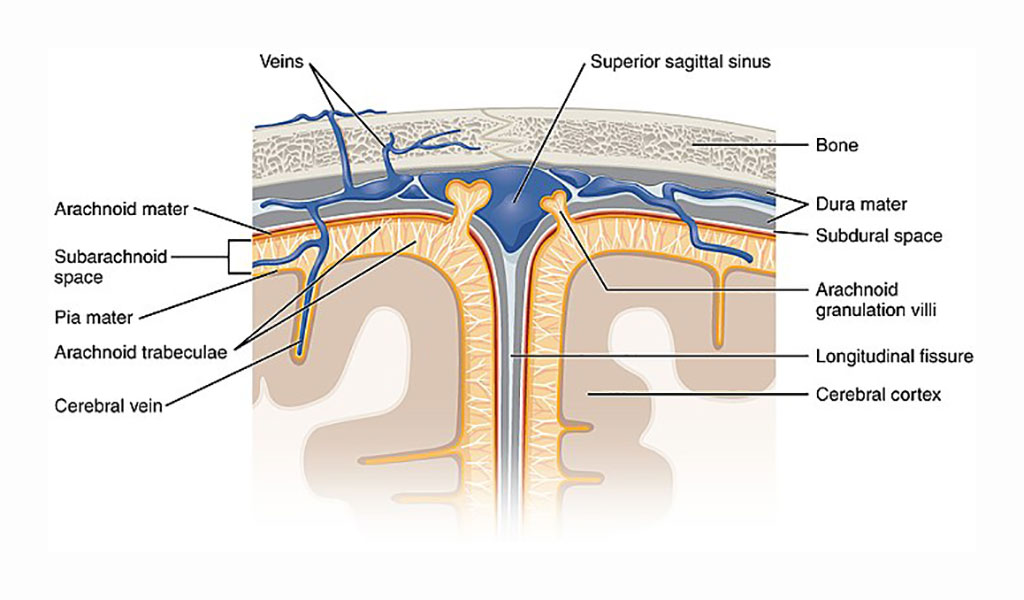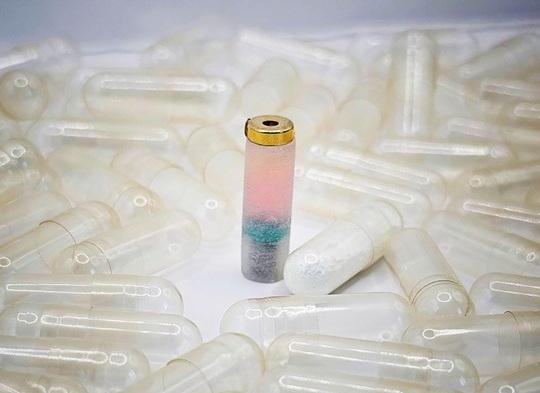New Injection Technique Helps Repair Spinal Cord Injury
|
By HospiMedica International staff writers Posted on 11 Feb 2020 |

Image: Injecting mesenchyml cells into the subpial space stimulates cell differentiation (Photo courtesy of Wikimedia)
A novel neural precursor cell (NSC) delivery technique employs single bolus cell injections into the subpial space to boost spinal cord recovery, according to a new study.
Developed by researchers at the University of California, San Diego (UCSD; USA), the Czech Academy of Sciences, (Libechov, Czech Republic), the University of the Ryukyus (Okinawa, Japan) and other institutions, the new technique injects NSCs into the subpial space--situated between the pial membrane and the superficial layers of the spinal cord—so that they can differentiate into multiple types of neural cells. In a study in immunodeficient rats, the researchers injected two boluses of human NSCs into the subpial space of the cervical and lumbar spinal cord, respectively.
The researchers then assessed the survival, distribution, and phenotype of the transplanted cells six to eight months later. Immunofluorescence staining and mRNA sequencing analysis demonstrated a near‐complete occupation of the spinal cord by injected cells, with the transplanted NSCs preferentially acquiring glial phenotypes. In the outermost layer of the spinal cord, the injected hNSCs differentiated into glia limitans‐forming astrocytes and expressed human‐specific superoxide dismutase and laminin. The study was published on January 29, 2020, in Stem Cells Translational Medicine.
“Current spinal cell delivery techniques involve direct needle injection into the spinal parenchyma, the primary cord of nerve fibers running through the vertebral column. As such, there is an inherent risk of spinal tissue injury or intraparechymal bleeding,” said corresponding author Professor Martin Marsala, MD, of UCSD. “The new technique is less invasive, depositing injected cells into the spinal subpial space. This injection technique allows the delivery of high cell numbers from a single injection. Injected cells acquire the functional properties consistent with surrounding host cells.”
According to the researchers, the data show that the subpial cell delivery technique is highly effective in populating the entire spinal cord with injected NSCs, accelerating and improving treatment potency in cell-replacement therapies for spinal neurodegenerative disorders in which a broad repopulation by glial cells, such as oligodendrocytes or astrocytes, is desired, such as in the treatment of amyotrophic lateral sclerosis (ALS), multiple sclerosis, or spinal cord injury.
Related Links:
University of California, San Diego
Czech Academy of Sciences
University of the Ryukyus
Developed by researchers at the University of California, San Diego (UCSD; USA), the Czech Academy of Sciences, (Libechov, Czech Republic), the University of the Ryukyus (Okinawa, Japan) and other institutions, the new technique injects NSCs into the subpial space--situated between the pial membrane and the superficial layers of the spinal cord—so that they can differentiate into multiple types of neural cells. In a study in immunodeficient rats, the researchers injected two boluses of human NSCs into the subpial space of the cervical and lumbar spinal cord, respectively.
The researchers then assessed the survival, distribution, and phenotype of the transplanted cells six to eight months later. Immunofluorescence staining and mRNA sequencing analysis demonstrated a near‐complete occupation of the spinal cord by injected cells, with the transplanted NSCs preferentially acquiring glial phenotypes. In the outermost layer of the spinal cord, the injected hNSCs differentiated into glia limitans‐forming astrocytes and expressed human‐specific superoxide dismutase and laminin. The study was published on January 29, 2020, in Stem Cells Translational Medicine.
“Current spinal cell delivery techniques involve direct needle injection into the spinal parenchyma, the primary cord of nerve fibers running through the vertebral column. As such, there is an inherent risk of spinal tissue injury or intraparechymal bleeding,” said corresponding author Professor Martin Marsala, MD, of UCSD. “The new technique is less invasive, depositing injected cells into the spinal subpial space. This injection technique allows the delivery of high cell numbers from a single injection. Injected cells acquire the functional properties consistent with surrounding host cells.”
According to the researchers, the data show that the subpial cell delivery technique is highly effective in populating the entire spinal cord with injected NSCs, accelerating and improving treatment potency in cell-replacement therapies for spinal neurodegenerative disorders in which a broad repopulation by glial cells, such as oligodendrocytes or astrocytes, is desired, such as in the treatment of amyotrophic lateral sclerosis (ALS), multiple sclerosis, or spinal cord injury.
Related Links:
University of California, San Diego
Czech Academy of Sciences
University of the Ryukyus
Latest Surgical Techniques News
- Minimally Invasive Endoscopic Surgery Improves Severe Stroke Outcomes
- Novel Glue Prevents Complications After Breast Cancer Surgery
- Breakthrough Brain Implant Enables Safer and More Precise Drug Delivery
- Bioadhesive Sponge Stops Uncontrolled Internal Bleeding During Surgery
- Revolutionary Nano Bone Material to Accelerate Surgery and Healing
- Superior Orthopedic Implants Combat Infections and Quicken Healing After Surgery
- Laser-Based Technique Eliminates Pancreatic Tumors While Protecting Healthy Tissue
- Surgical Treatment of Severe Carotid Artery Stenosis Benefits Blood-Brain Barrier
- Revolutionary Reusable Duodenoscope Introduces 68-Minute Sterilization
- World's First Transcatheter Smart Implant Monitors and Treats Congestion in Heart Failure
- Hybrid Endoscope Marks Breakthrough in Surgical Visualization
- Robot-Assisted Bronchoscope Diagnoses Tiniest and Hardest to Reach Lung Tumors
- Diamond-Titanium Device Paves Way for Smart Implants that Warn of Disease Progression
- 3D Printable Bio-Active Glass Could Serve as Bone Replacement Material
- Spider-Inspired Magnetic Soft Robots to Perform Minimally Invasive GI Tract Procedures
- Micro Imaging Device Paired with Endoscope Spots Cancers at Earlier Stage
Channels
Critical Care
view channel
AI Heart Attack Risk Assessment Tool Outperforms Existing Methods
For decades, doctors have relied on standardized scoring systems to assess patients with the most common type of heart attack—non-ST-elevation acute coronary syndrome (NSTE-ACS). The GRACE score, used... Read more
'Universal' Kidney to Match Any Blood Type
Blood-type incompatibility has long been one of the greatest obstacles in organ transplantation, forcing thousands of patients—particularly those with type O blood—to wait years longer for compatible donors.... Read morePatient Care
view channel
Revolutionary Automatic IV-Line Flushing Device to Enhance Infusion Care
More than 80% of in-hospital patients receive intravenous (IV) therapy. Every dose of IV medicine delivered in a small volume (<250 mL) infusion bag should be followed by subsequent flushing to ensure... Read more
VR Training Tool Combats Contamination of Portable Medical Equipment
Healthcare-associated infections (HAIs) impact one in every 31 patients, cause nearly 100,000 deaths each year, and cost USD 28.4 billion in direct medical expenses. Notably, up to 75% of these infections... Read more
Portable Biosensor Platform to Reduce Hospital-Acquired Infections
Approximately 4 million patients in the European Union acquire healthcare-associated infections (HAIs) or nosocomial infections each year, with around 37,000 deaths directly resulting from these infections,... Read moreFirst-Of-Its-Kind Portable Germicidal Light Technology Disinfects High-Touch Clinical Surfaces in Seconds
Reducing healthcare-acquired infections (HAIs) remains a pressing issue within global healthcare systems. In the United States alone, 1.7 million patients contract HAIs annually, leading to approximately... Read moreHealth IT
view channel
Printable Molecule-Selective Nanoparticles Enable Mass Production of Wearable Biosensors
The future of medicine is likely to focus on the personalization of healthcare—understanding exactly what an individual requires and delivering the appropriate combination of nutrients, metabolites, and... Read moreBusiness
view channel
Philips and Masimo Partner to Advance Patient Monitoring Measurement Technologies
Royal Philips (Amsterdam, Netherlands) and Masimo (Irvine, California, USA) have renewed their multi-year strategic collaboration, combining Philips’ expertise in patient monitoring with Masimo’s noninvasive... Read more
B. Braun Acquires Digital Microsurgery Company True Digital Surgery
The high-end microsurgery market in neurosurgery, spine, and ENT is undergoing a significant transformation. Traditional analog microscopes are giving way to digital exoscopes, which provide improved visualization,... Read more
CMEF 2025 to Promote Holistic and High-Quality Development of Medical and Health Industry
The 92nd China International Medical Equipment Fair (CMEF 2025) Autumn Exhibition is scheduled to be held from September 26 to 29 at the China Import and Export Fair Complex (Canton Fair Complex) in Guangzhou.... Read more













